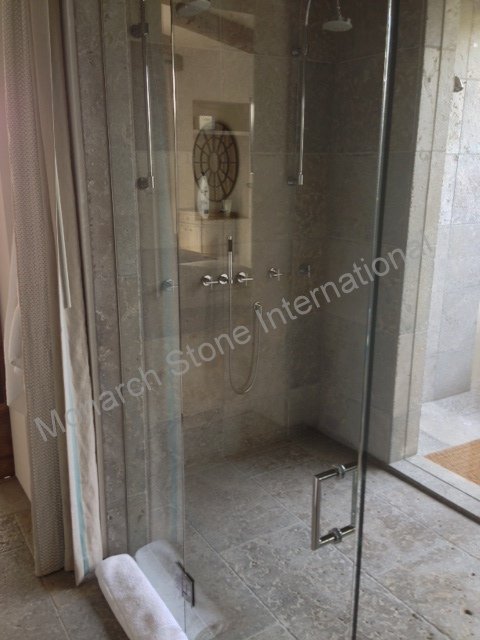The choice to use natural stone in the bathroom is a rock solid decision!
Natural stone for your bathroom is a wonderful decision if you invest the time to select the best stone and care and treat the stone properly. The Natural Stone Institute provided the following insight gathered from professionals in the natural stone industry.
There are many natural stones to consider for a bathroom area. Take marble for example. While marble is a beautiful and popular choice for bathrooms, homeowners should be aware that it should be sealed – recommended for all stone – prior to use in the shower. Marble has variations that can include veins. When moisture gets into the vein composition it can cause damage. Water can also cause discoloration in white marble because some white marbles contain naturally occurring iron-bearing minerals. Therefore It is crucial that marble is properly sealed and maintained.
Granite is a good choice for bathrooms, as most are easier to maintain because they don’t react to the three “A’s”: acid, ammonia and alcohol. Acid reacts to marble and travertine, and etches the surface, removing the polished finish.
Limestone is another excellent choice, as long as the right type is selected based on density and durability. Some types of limestone are softer, have small holes or open veins and are more porous. These would be generally considered too soft for moisture prone areas such as a bathroom. The image above is from a project supplied by Monarch Stone International with French Limestone flooring and tiles in French limestone, Limeyrat. This particular French limestone is hard and dense with various ‘benches’ (colors) to choose from.
Know Its Maintenance
No matter what material you use, there will always be maintenance. There are those who may be nervous to use natural stone, but even porcelain tile requires proper upkeep. When cleaning natural stone, it is best to keep things simple. Soapy cleaners can add build up and attract dirt, while vinegar and harsh cleaners can damage the stone. To avoid these issues, always use a neutral cleaner with a pH level of around seven.
A few quick preventative measures can keep stone surfaces looking fresh.To help avoid water marks on the stone surface, use a squeegee on the walls after showering, leave the doors open to allow moisture to escape and use glycerin over traditional bar soap which can cause more soap scum which is a conduit for mold.
Stone should be sealed with a penetrating sealer. While sealing stone is something the average homeowner can do, it is important to follow the instructions. For best results, hire a stone professional or restoration specialist. And consider hiring a professional to come out every two to five years to have the stone rehoned or repolished as many stones can lose their lustre due to water exposure over time.
Being informed and knowledgeable about the care and maintenance of a natural stone bathroom is not difficult and will ensure your investment will provide warmth and beauty well into the future!

